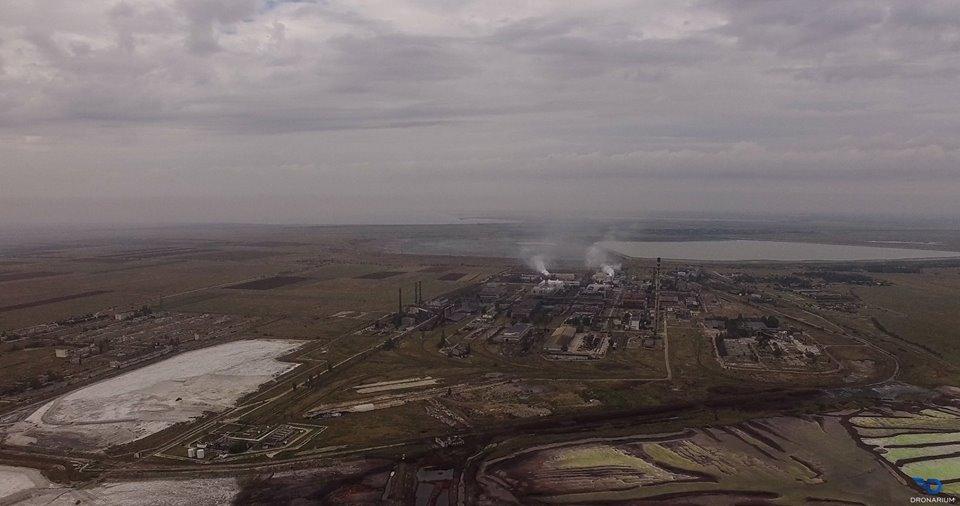
Deputy Minister Hrymchak: Projectile hit at Crimean Titan "most probable" version given composition of emissions
Deputy Minister for the temporarily occupied territories, Yuriy Hrymchak, sat down with UNIAN to speak about what happened in northern Crimea's Armyansk at "Crimean Titan" plant, as well as about other more potentially dangerous enterprises located in the occupied peninsula and parts of Donbas.
What happened at Crimean Titan in the occupied Crimea's Armyansk, where a hazardous release of toxic sulfurous anhydride was spotted?
Taking into account the latest data, we have serious suspicions that the situation with "Crimean Titan" is a manmade environmental disaster, meaning that some emergency situation occurred at the plant on the night of August 23-24. This was the night when the first release of chemicals happened. The second release occurred on the night of September 4-5.
Experts named two major versions. The first one is that the source of the chemical release could become the acid settling tanks at the plant, while an emergency was a result of excessive heat and lack of water from the North Crimean Canal. The second one is that during Russia's military exercises, a shell hit the premises of the enterprise. Which version are you inclined to trust more?
Most likely, many things coincided. I consider the version of a projectile hit at the plant most probable, which is evidenced by the chemical composition of the emissions we're observing today. And the projectile hit precisely the plant. A shot was spotted from space, but we can't say for sure, where it hit. A lot of various information is coming. The only thing we know for sure is that the wind caused the spread of the emissions.
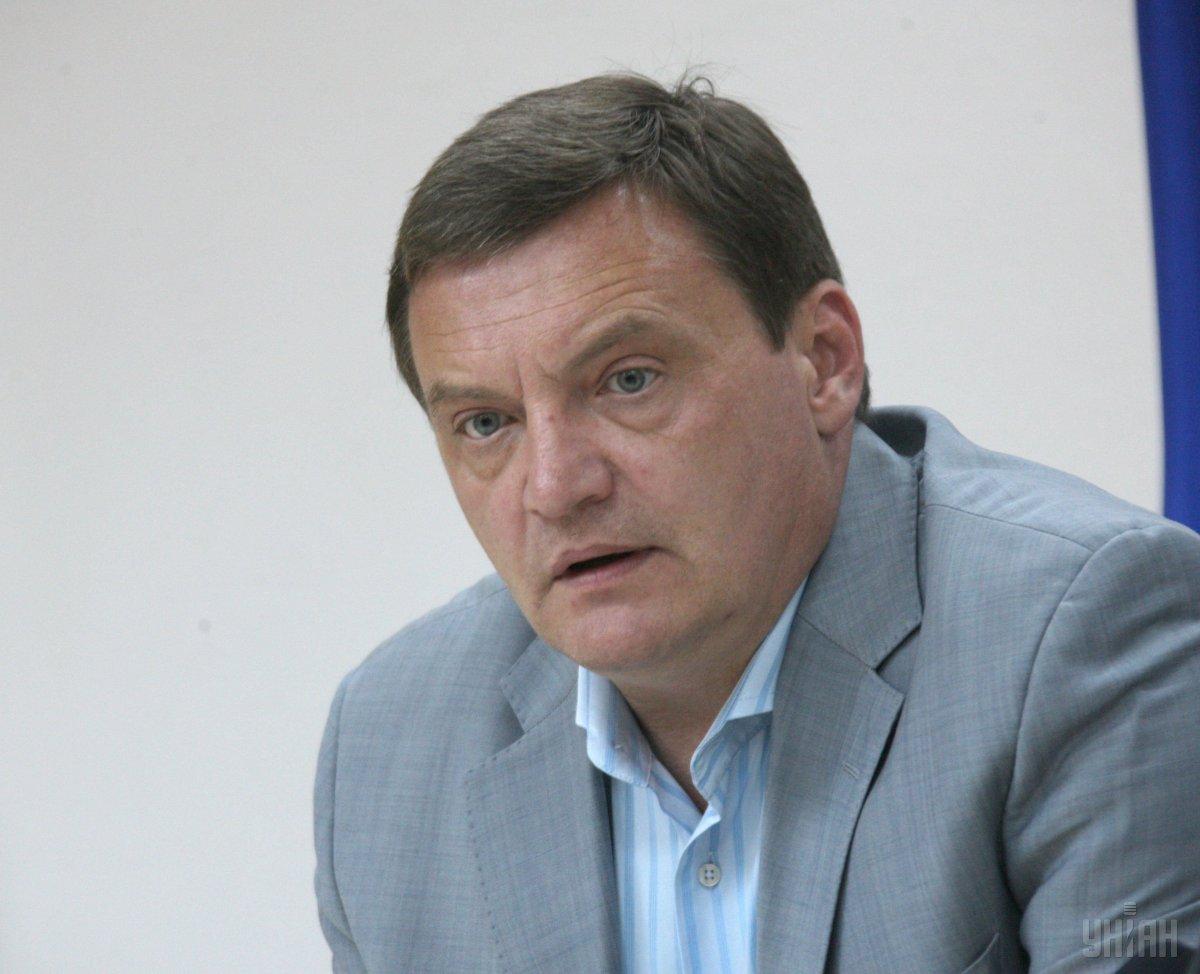
Have the territories of mainland Ukraine adjacent to the occupied Crimea been seriously affected?
No, they are not affected at all. The latest data our ministry has, which I posted on Facebook, say that the maximum permissible levels have not been exceeded. The side of the settling tanks that reaches out to our territory has been inspected, and everything is within norm there.
The Foreign Ministry said they were collecting evidence of a chemical release in Crimea to appeal to the international Organization for the Prohibition of Chemical Weapons (OPCW). What's in it for Ukraine?
There were reports that special containers for transporting chemical weapons were spotted at the plant itself, as well as in Armyansk. Is it possible that this was chemical weapons? Theoretically, it is. Therefore, an appeal to the OPCW is a must. This organization has the right to inspect any country for chemical weapons. And then the OPCW concludes whether chemical weapons were present and what happened. But, as you know, Russia does not allow representatives of international organizations to Crimea.
So what can we expect from the appeal?
In the light of the recent events – the chemical attacks in Syria, and that novichok poisoning on British soil – it is quite possible that Russia will have to "open the doors" in Crimea to the OPCW.
I talked with ecologists about the developments at Crimean Titan, and they said that they applied to the authorities demanding to collect and analyze information on hazardous facilities and the consequences of their operations in the territories occupied by Russia - in Crimea and Donbas. But the relevant actions were never taken...
Well, that's a strange statement. The Donetsk Regional State Administration purchased 10 mobile stations to control the areas mentioned by the ecologists. One of them operates at the de-facto border with the occupied Crimea, measuring emissions. There are also ecology posts, also carrying out all necessary measurements for their part. Border guards are also involved. That is, today we're in control of the situation. Over the whole observation period, no breaches of permissible levels were recorded. Only once, in the first days of September, when the wind was blowing from Crimean Titan, we saw a decrease in air quality indicators. In order not to jeopardize health of children and pregnant women, they were evacuated, just in case. We might have overreacted, but we still did the right thing, I believe, although, the decision was controversial. This could provoke panic, but in this case, this was a right move anyway.

Russian media wrote that on September 9, operations at Crimean Titan were suspended and that it should be later shut down completely. Will this resolve the crisis?
We do satellite monitoring, and we saw that on September 9, the enterprise was still working – there was smoke. We also spoke with experts who say it is impossible to just shut down the whole plant overnight - this is a continuous production. An abrupt halt can only exacerbate the situation and lead to worse consequences. What we're seeing from space is that it is being stopped gradually. On September 10, the smoke from the plant was no longer coming.
There's always been that sulfur odor coming from Crimean Titan. In 2014, a Ukraine traitor, the so-called "head of the Crimean parliament" Vladimir Konstantinov, said that additional treatment facilities worth $500 million would be set up at the plant at the expense of Russian banks. Four years on, nothing happened.
If the plant is shut down, but it turns out that the evaporation comes from the settling tank due to lack of water, what should be done in this case?
The tank must be then filled with sea water.
But experts suggest this can result in a chemical reaction with negative consequences...
There's no 100% probability. Many scientists, many minds. Seawater is an alkaline solution. As it reacts with acid, the temperature rises – in other words, heat is released. And that's it. You can also fill the tank with fresh water. But Ukraine has officially stated that it will not supply water on its own initiative. And this is right. Russian leadership did not apply to Ukraine with such a request, because then they would have to recognize the occupation of Crimea. So why should we unilaterally help the occupier? Besides, water costs money. It is raised from the Dnipro River by pumping stations and driven along canals. I've already seen reports that some kind of an "agreement" is being drafted between Armyansk and some mainland Ukrainian city on water suppies from the territory of Ukraine. So I'll say this: all water canals, according to the current legislation, are owned by the state. So this won't work out for Russia. The water is on our territory and the dam is in Ukraine's Kherson region, too. By the way, it was its construction that initially led to the dawn of agriculture in the region. And now the Crimea is turning into a desert.
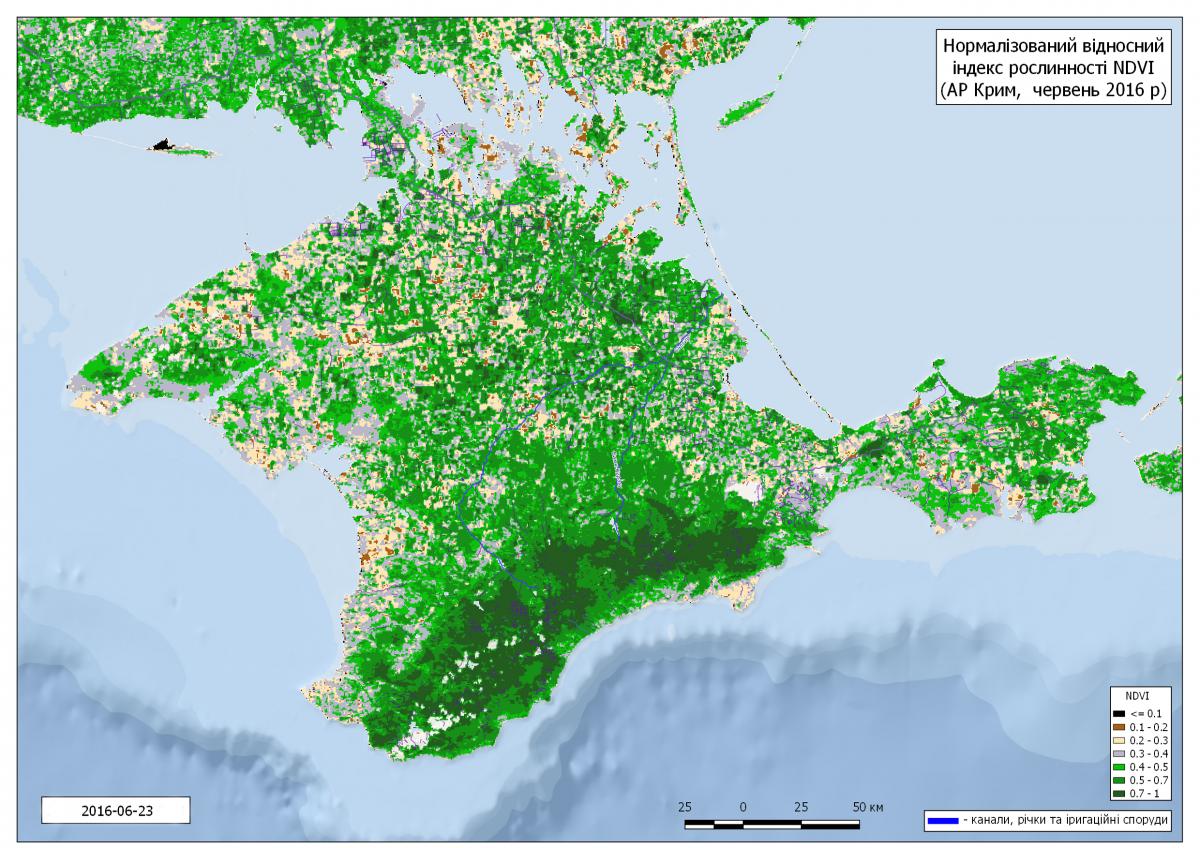
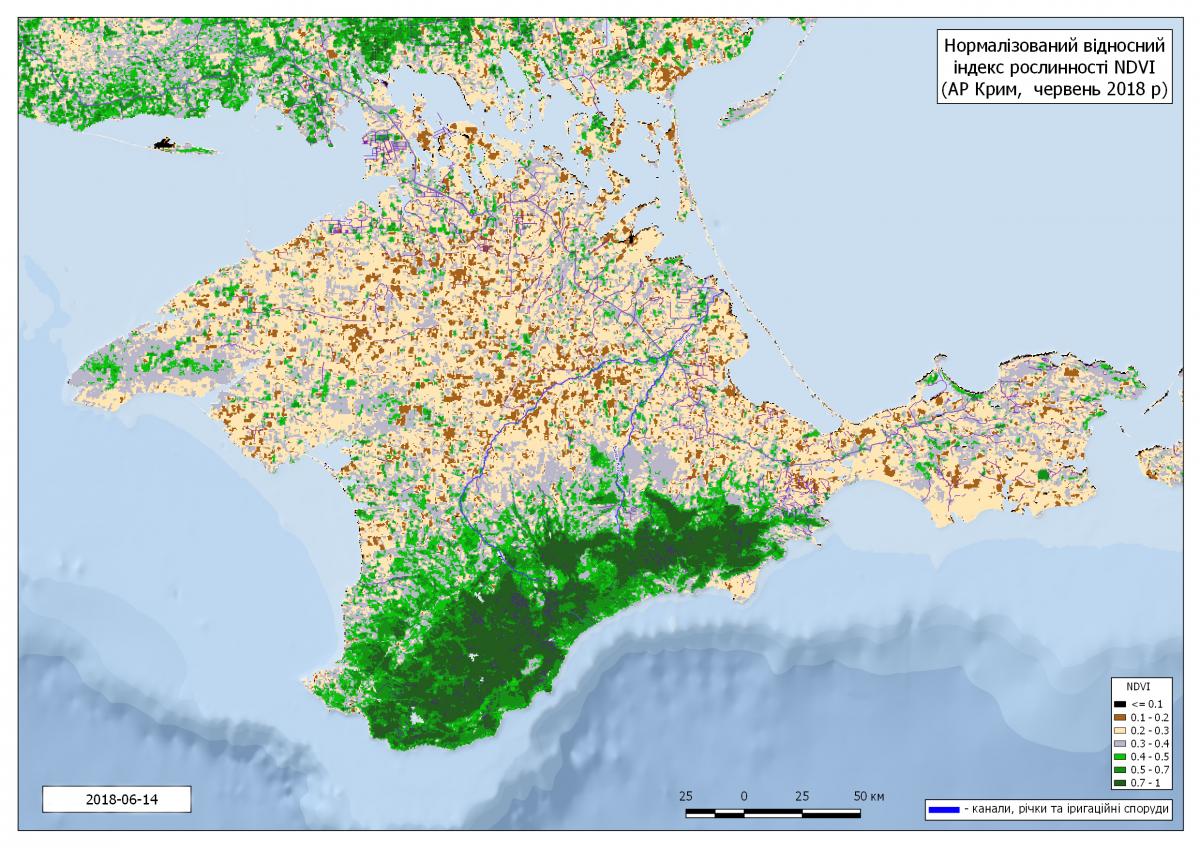
Another version of what happened in Crimea is that allegedly, the situation with Crimean Titan is pure provocation and manipulation, to force Ukraine to restart water supplies to the occupied Crimea, which is in dire need of it. What do you think about this version?
It might be true. Only Russians could come up with something like this – to mess up an entire city for the sake of such a plot. However, they are truly capable of many things in general. Indeed, Crimea badly needs water. This summer was very hot, which led to the actual drying of all reservoirs across the peninsula.
But this doesn't change anything. There's an aggressor state, so why should we give them water? This won't work out for Russia.
Let's imagine that everything is done with the plant and it has been shut down. Will the problem be resolved in this case?
No, it won't. What they're now doing in Armyansk – neutralizing acid emission by sodium solution – cannot stop the process if the source of emissions is the enterprise itself.
So what's your forecast?
We made the forecast two years ago: the lack of water and wrong moves on the part of occupation authorities to taking up artesian water leads to soil salinization and man-made disasters, and that's what happened. The steppe part of Crimea has practically become waterless. As for the affected Crimean territories, we don't have access to them yet, so we can't assess the damage.
Is the restoration of such territories such a long process?
In 1954, when the peninsula became part of Ukraine, it was a semi-desert, salt marshes everywhere, with nothing growing there. After the construction of the North Crimean Canal, the water started flowing to the peninsula, which allowed engaging in agriculture there. However, it took 10 years. This is how long those salt marshes were cleansed with fresh water. The salt went down, and the land became suitable for use. Due to shortage of water after it was switched off by Ukraine, they began drilling additional artesian wells across the peninsula, and as a result, the salt rose to the surface. When the Crimea returns to Ukraine, it will be necessary to wash away salt for years again and revive everything that is now dying, like after the disaster in Armyansk. There's just one thing: we will send the bill to Russia

But Russia has never paid off its debts... One day, everything happens for the first time. Russia crossed the red line when it occupied Crimea. Besides, if Georgia failed to raise the international community in 2008 regarding the occupation of its territory by Russia, Ukraine managed to do it. There is an international coalition in our support, our allies, who help us financially and technically. The Russian Federation has no allies – it is an outcast state. I am sure that this time Russia will have to pay its debts – for Armyansk, for what it did with Crimea, with Donbas… After all, it might as well be forced to pay with gas for the next hundred years.
In Crimea, in addition to Crimean Titan, there are other potentially dangerous enterprises: BROM in Krasnoperekopsk, where more than 300 tonnes of chlorine is stored, and the Crimean Sodium Plant, also in Krasnoperekopsk, with tonnes of chemicals. How are things going there and what can we expect?
Two years ago, Ukrainian prosecutors opened criminal cases into the unsatisfactory situation at these facilities. Later, more criminal cases were opened over the misuse of dangerous substances. But due to the lack of access, we're unable to see the actual situation there.
The Ministry of Natural Resources of Russia every year compiles lists of risky facilities, including in the occupied Crimea. The mentioned enterprises are always on those lists. That is, nothing is being done for their safety, right?
There are only loud statements being made, nothing else.
Let's turn to the problems of eastern Ukraine. Russia also occupied part of Donbas… And there are risky production facilities on both sides of the contact line. What is happening there? Let's start with the Yunkom mine in Yunokommunarivsk near Yenakiyeve, where in 1979, Soviet scientists conducted a secret experiment called Cleavage – an underground nuclear explosion. What's the situation with the mine these days?
Yes, there was a 903-meter deep nuclear explosion, and the unit remained there. Nobody knows how everything looks like as no one has ever gone down there. One thing we know for sure is that there is a very high radiation level there. The mine was permanently shut down in 2002 by a government decision, and water was to be pumped out nonstop. In the spring of this year, occupation "authorities" stopped pumping out that water and the mine began to be flooded. According to our experts, radionuclides may reach the surface and get into the water. If this happens, although it won't be tomorrow, these radionuclides will go to the Siversky Donets River, from there to the Don, and then to the Sea of Azov. And this will be a disaster.
Another threatening company is Horlivka-based chemical plant. In the autumn of 2013, thousands of tonnes of mononitrochlorobenzene was taken from its territory. But in 2011, thousands of tonnes of "unaccounted" poisonous substance was discovered there. Is there a chemical threat today?
Back in the day, when I was a vice-governor in the region, we never found a solution. This is a very serious problem. In 2005, we brought to the plant officials from the National Security and Defense Council. By the way, then the plant was guarded by only two people! The solution was never found. The situation unfolded as a result of the enterprise being shut down abruptly. All hazardous materials are in pipes. And all of this is just lying out there under the open sky, in a high-risk hostility zone. We are constantly facing the blackmail by the occupation authorities, including regarding this enterprise which they threaten to blow up. If they do so, the explosion will be unprecedented. What might happen afterwards, nobody knows for sure as no one has ever set up such "experiments" anywhere else in the world.
And now what about that radioactive material burial site at the testing ground of the Donetsk chemical plant, where radioactive waste was being buried since 1963 and later the military was disposing of obsolete ammunition. As it turned out later, not everything has been disposed of…
Theoretically, the enterprise is a threat, but much less so than the above-mentioned facilities. We shouldn't worry about it too much. By the way, in 2005, Barack Obama visited the site when he was a U.S. Senator. He inspected the disposal of ammunition, which was carried out for U.S. money. He was pleased with what he saw, it seemed.
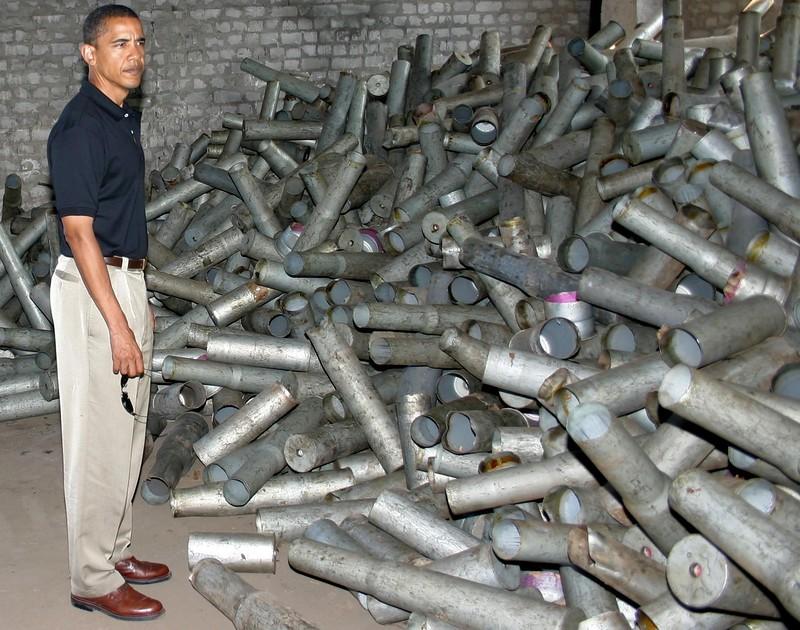

The next facility is the Avdiyivka-based coking plant. How are things going there?
The Avdiyivka coking plant is itself a very dangerous enterprise. Last year, when I was there, all the furnaces worked, the plant was repaired after the shelling, which had damaged the facility and killed several workers. The plant is within the range of artillery fire. Therefore, the situation is risky. Avdiyivka is a suburb of Donetsk, so if you go along its streets you can directly get to Donetsk. However, the situation is calmer near the factory, but previously, the fighting was raging just 2-3 kilometers away. The risks remain.
What about the dams of thermal power plants, the destruction of which can lead to the flooding of large areas, and what about the filter stations working with chlorine?
Then Donetsk filtering station as of today, thanks to the humanitarian agency of the Swiss government, works on sodium hydrochloride. It is not as dangerous as chlorine. A very big problem though was with Bakhmansky agricultural enterprise, where there were mines in the sedimentation tanks. We managed to demine the area but had we failed, the waste would have spread for many kilometers. Regarding the dams, the Russians are impeding their full inspection.
What needs to be done to facilitate the solution of these problems?
We tried to ensure that our ecologists entered the observer mission in order to have access to the occupied territories. But we have not received the green light. And, besides the mentioned risky facilities, there is one more problem. On the territory of Luhansk and Donetsk regions – the Central Donbas – about 30 mines are being flooded, or have already been flooded. This led to the fact that in these territories the amount of water in the soil increased dramatically. No one pumps water from the mines. There is a threat that in these regions it will rise to the surface. This is bad water that kills all life.
It turns out that when Crimea and Donbas once again become Ukrainian, their revival will cost billions, and the process will take decades...
Any problem should be considered an opportunity. We will tackle all challenges. All projects for the revival and rescue of Crimea and Donbas are being worked out. We are preparing for the return of our territories.
Nana Chornaya

